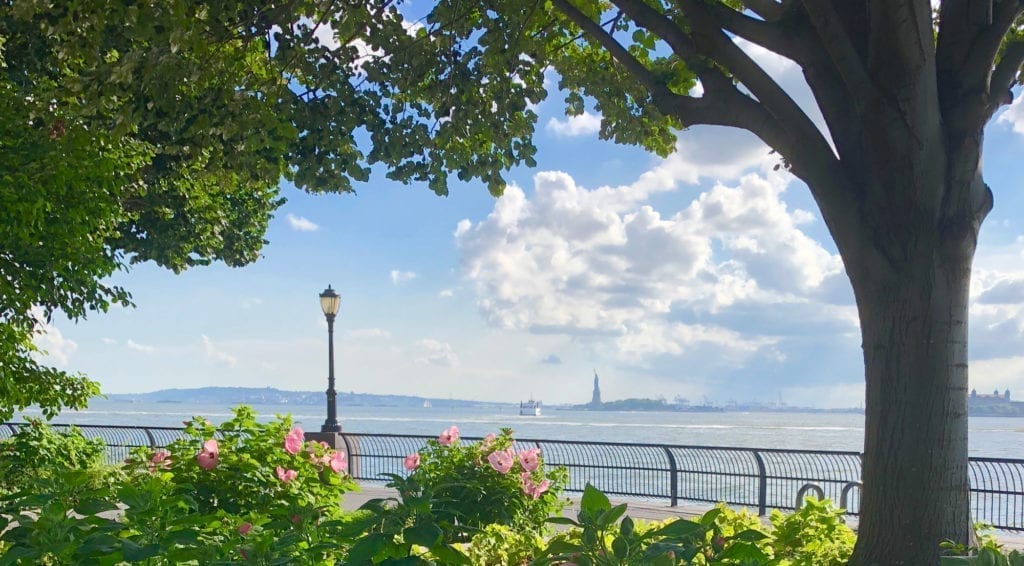The Met Cloisters Museum graces Upper Manhattan with art, peace, and quiet. Not technically a religious place, it still feels like a spiritual sanctuary. That’s thanks to calming spaces and an extraordinary art collection. Thus, hassled New Yorkers seek retreat at The Met Cloisters. After all, it’s a stressful city. Art lovers also visit for the glorious artwork. Medieval pieces become accessible, relatable, and down-to-earth between these columns and walls.
For an audio version of the piece click below:
The serene feeling about this place sets a clean, fresh stage. So, the grounded artwork feels personal. In fact, a Met Cloisters visit gives you the sense of being in a home. Not an ordinary house, of course. This one’s Rockefeller funded. But it feels more like a grand home than a museum. Far from true humility, it’s actually a branch of The Metropolitan Museum of Art. Rockefeller left it to the museum as part of his estate. He wasn’t the original owner of this delightful collection, though.
John D. Rockefeller Jr. discovered these objects thanks to their original collector. This curator, George Grey Barnard, was an eminent sculptor with exquisite taste. Barnard loved these medieval works so much, he erected a building in New York to house them.
It’s not surprising. His sculptural specialty laid in architectural pieces. Barnard designed this careful curation to feel like an intimate chapel. He fashioned fanciful architectural elements based on French cloisters and Roman catacombs. Barnard didn’t much care about historical accuracy in his creation. Instead, he constructed a gothic fantasy. When Rockefeller saw this dream that Barnard turned into glorious reality, he wanted in on it.
Medieval Art Gets Relevant @ Met Cloisters
Barnard opened that first dreamy little chapel in 1914. Medieval art was about as far from fashion as possible at the time. There were only two serious American collectors. One, J. Pierpont Morgan, displayed his curation at the Met in the exact same year as Barnard’s opening – 1914. So, it seems something was brewing in the art community. Tastes were evolving as American culture shifted. We were on the brink of both prohibition and the roaring twenties. Dynamic opposites laid wait on our cultural horizon. Perfect timing for this humble not-quite-a-chapel to blossom into a majestic museum.
Times were changing. But some things stay eternal. Like the power of networking. For instance, Rockefeller first heard about Barnard’s Cloisters through a mutual friend. The architect Welles Bosworth had worked with both Rockefeller and Barnard. In 1916 Welles suggested that John D. Jr. buy a bundled bit of Barnard’s collection. Like most people at the time, Rockefeller didn’t care much about medieval art. He simply bought art either to please his wife or serve “the people”. This first sale between them forged a partnership that would accomplish both.

Jewel of the Met Cloisters – Unicorn Hunt Tapestries
The next Barnard and Rockefeller deal involved the famous Unicorn Hunt Tapestries. Many visit The Met Cloisters to see them in person, including me. As a child I bought unicorn stickers, lived in a unicorn tee shirt, and coveted these tapestries. It was 1980s little girl law. As a freshly minted New Yorker adult I trotted up to The Met Cloisters to see them. Upon entry, I purchased a unicorn tapestry pillow. Job done. The circle of my dutiful life was thus complete. It was awe inspiring to see them in person. Imagine living with these on your living room walls. In fact, at first, the six tapestries hung in Rockefeller’s Manhattan home. That’s where the happy wife part comes in. Now they thrill the public.
Housed in their own special room, these six beauties stay well-protected. When I first saw them, twenty years ago, the tapestries hung in a regular room at The Met Cloisters. Well lit and lovely, I pondered the jewel-toned threading at my leisure. But sunlight can damage the rich hues of woven fabric. So, bring your eyeglasses and take Vitamin A before your next visit. It’s dark as the Tunnel of Love in there.
The motion detectors are also extra sensitive in the Unicorn Hunt Tapestry room. This isn’t the place for leaning in, ladies. You can only get so close. Cloisters security guards don’t allow phone flashlights either. I tried that trick and was swiftly reprimanded. Lucky for me, accumulated good citizen points assuage my guilt. So, use the light and apologize… But you didn’t hear it from me.

Serenity at The Met Cloisters
The Met Cloisters isn’t all about the tapestries. Times have changed. Still, as an experience, this landmark place gets better with age. We can all use a quiet place at times. It’s well known. But with a visit to the glorious serenity of the Cloisters, a revelation greets you. Turns out, making a space for quiet feels incredible whether you thought you needed it or not. Stillness and peace are a welcome change for the better in New York City. That’s all there is at The Met Cloisters. There’s only calm and quiet. It’s not an actual religious space. But the space feels like a religious experience.
This angel above knows where your peace lies. It’s inside. She’s a reminder. The Annunciation refers to a divine announcement. Sometimes, likely in the case of this angel, it’s about the angel telling Mary she’s pregnant with God’s child. Other times it’s a limestone statue reminding a harried lady to simply enjoy a moment of silence.
Many museums offer tours, even headphones you can walk around with solo. These can serve as compelling guides to the artwork. I love an illuminating tour more than most. But I recommend passing on that option at The Met Cloisters. Let the quiet envelop you. It’s like a mini meditation retreat for the mind. In this museum ignoring your phone feels natural. You forget it. The peace of the space takes over. I can’t think of a better salve for a stressed city dweller.

